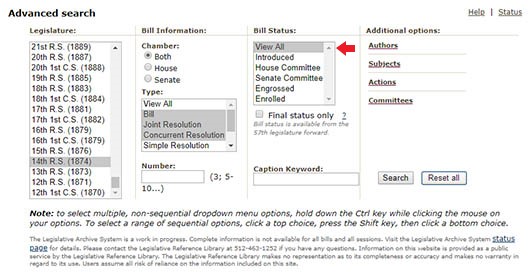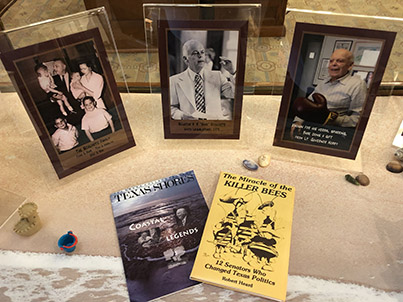In this weekly post, we feature helpful research tools and recent articles of interest to the legislative community.
- Read about precautions to take if wildfire smoke is in your area. (Centers for Disease Control and Prevention, July 31, 2018)
- Review how much it costs to run a state's prison system, state by state. (24/7 Wall St., July 26, 2018)
- Consider what states are doing to combat robocalls. (Stateline (Pew Charitable Trusts), July 25, 2018)
- Examine the facts related to 3D printing of guns. (The Weekly Standard, July 31, 2018)
- "Income-share agreements: Higher returns." Economist, July 21st-27th, 2018, p. 57.
Reports some universities are working with investors to offer students a different approach to paying tuition and fees — "income-share agreements" [ISAs]. Explains ISAs spare students the higher payments associated with private loans and lower their debt burden. - "U.S. Supreme Court and schools: 2017-18." Education Week, July 18, 2018, p. 20.
Summarizes recent United States Supreme Court rulings on K-12 education, including school funding, immigration, teachers' unions, and an assortment of First Amendment issues. - "Regional transportation council looking at possible projects." By Paul K. Harral. Fort Worth Business Press, July 16-22, 2018, pp. 8, 10.
Details the North Texas Regional Transportation Council's consideration of transportation initiatives based on hyperloop technology. - "New approaches in Medicaid: Work requirements, health savings accounts, and health care access." By Benjamin D. Sommers, et al. Health Affairs, July 2018, pp. 1099-1108.
Assesses views from low-income adults in Indiana, Ohio, and Kansas (representing three different Medicaid policies) on health savings accounts, work requirements, and Medicaid expansion. Finds that current Medicaid innovations may lead to unintended consequences for coverage and access to health care. - "The prospective role of charity care programs in a changing health care landscape." By Matthew Ralls, Lauren Moran, and Stephen A. Somers. Internet Resource, July 2018, pp. 1-5.
Explores the current and future role of charity care programs [CCPs] in offering and organizing free- and reduced-cost health care to individuals. Notes that CCPs predict an increased demand for services but have concerns about funding. - "The natural gas grid needs better monitoring." By Gerad Freeman, Jay Apt, and Michael Dworkin. Issues in Science and Technology, Summer 2018, pp. 79-84.
Explains that outages affecting the natural gas pipeline system are not well-documented, nor are they tracked by the federal government. Discusses the reliability of the natural gas pipeline system and how it affects electric power plants. - "Potential policy approaches to address diet-related diseases." By Michael F. Jacobson, James Krieger, and Kelly D. Brownell. JAMA (Journal of the American Medical Association), July 24/31, 2018, pp. 341-342.
Suggests local, state, and federal jurisdictions, as well as private companies, take policy actions to address recent reports indicating higher obesity and sodium consumption rates. - "Lessons from the opioid epidemic: How public schools have become the safety net of last resort for traumatized children." By Zoe Carpenter. Nation, July 30/August 6, 2018, pp. 12-19.
Examines the opioid crisis in West Virginia, the state with the highest rate of death by overdose: 43.4 overdose deaths per 100,000 compared with the national average of 13.3. Discusses the "atrophy of public services across small-town America," including the lack of counselors and family support in public schools and rural health clinics ill-equipped to handle addiction. - "McPolitics." By Yascha Mounk. New Yorker, July 2, 2018, pp. 59-63.
Considers the transformation and homogenization of the two political parties into "nationalized" parties and away from an older system that saw interest and power at the local level. Argues nationalization has led to the "rise of two political mega-identities" and intense partisanship. Suggests common ground and moderation can still be found. - "Not just for lawyers: Environmental impacts of natural gas pipelines." By Ed Comer. Public Utilities Fortnightly, July 2018, pp. 42-45, 78.
Discusses major legal disputes currently affecting the utility industry. Focuses on the Federal Energy Regulatory Commission's consideration of the environmental issues related to natural gas pipelines. Related information at:https://ceq.doe.gov/ - "Underwater." By Jen Schwartz. Scientific American, August 2018, pp. 44-55.
Explores the chronic and extreme flooding experienced in coastal communities along the Atlantic coast. Discusses buyout programs operated by local and federal governments to move people away from such areas. - "Power in the bank." By Daniel Shea. State Legislatures, July/August 2018, pp. 38-41.
Points out the benefits of energy storage and the technology's limitations under current regulatory and market structures. - "Technology tests transparency." By Pam Greenberg. State Legislatures, July/August 2018, pp. 46-47, 49.
Discusses how states are using technology to manage an increasing number of public records requests and to address the challenges new digital formats create. - "Home delivery: Where is all the new housing?" By Luis B. Torres and Wesley Miller. Tierra Grande, July 2018, pp. 2-5.
Examines why new home inventories in Texas are below what is considered a balanced market. Attributes this imbalance, which is affecting housing affordability, to a variety of factors, including rising land prices, sluggish labor productivity, and regulations.










